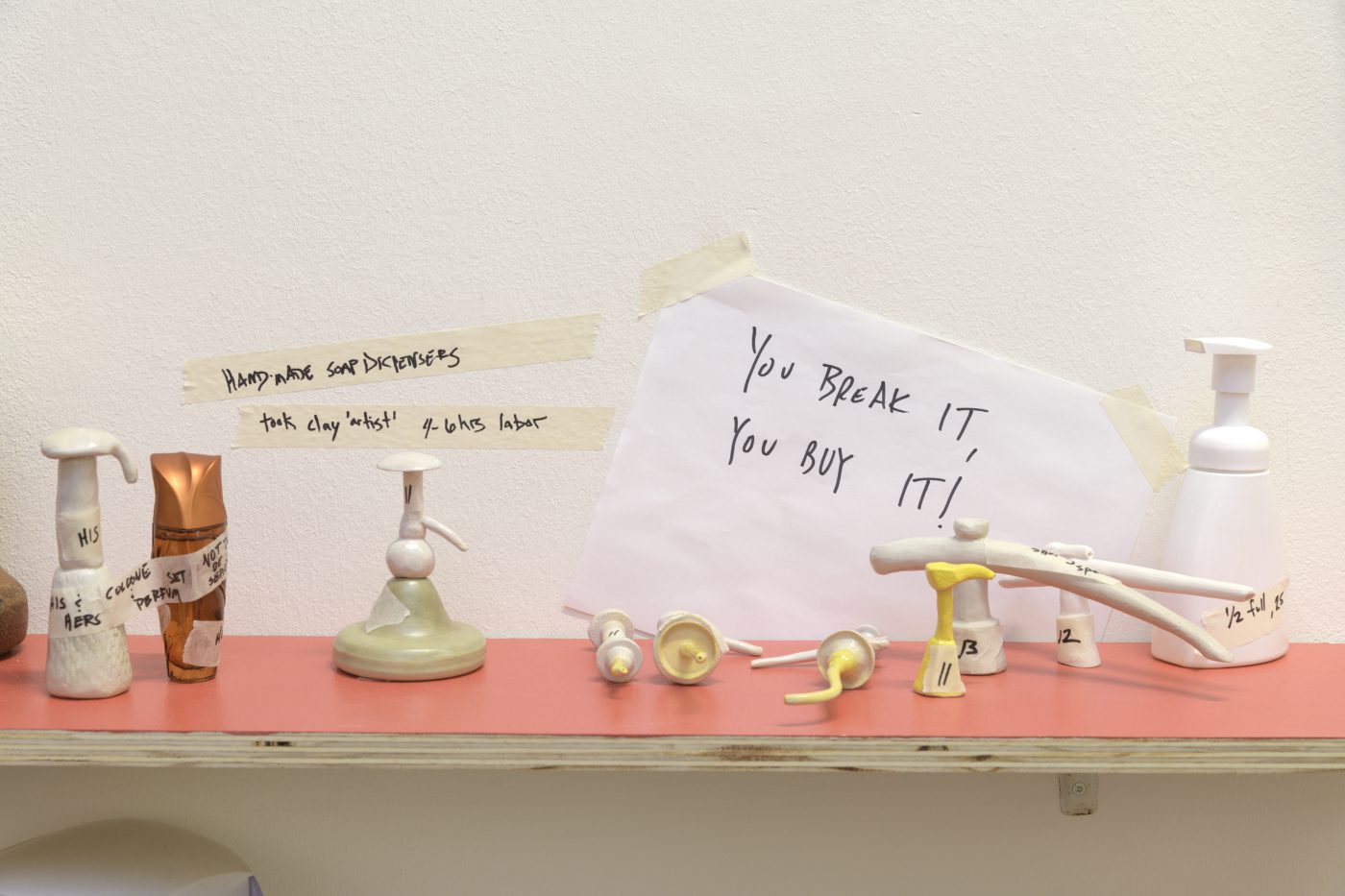
The Trouble with Value – Liquidating artworks
How do we attribute monetary value to objects? What happens to artworks when they are merited just for their use value? The exhibition The Trouble with Value, a collaboration between Onomatopee and Gallery of Contemporary Art in Krakow tries to unravel the diverse layers that make up the valuation process of works of art.
The exhibition The Trouble with Value investigates value by disentangling the relation between the symbolic and economic value that a work of art holds. The exhibition is the second chapter of a long-term collaborative project between Bunkier Sztuki Gallery of Contemporary Art in Krakow, Poland and Onomatopee, or more specifically between Kris Dittel (Onomatopee) and Krzysztof Siatka (Bunkier Sztuki).
Throughout their conversations they have identified five key elements surrounding value: the role of language in relation to value creation; ways in which artists value and devalue their artworks; the infrastructure of the contemporary art world and the institutions’ role in value creation, the role of iconoclasms in image and value creation; and lastly questions surrounding the role of artistic labour in relation to determining value. There is a lot that can be said about value especially in the art context.
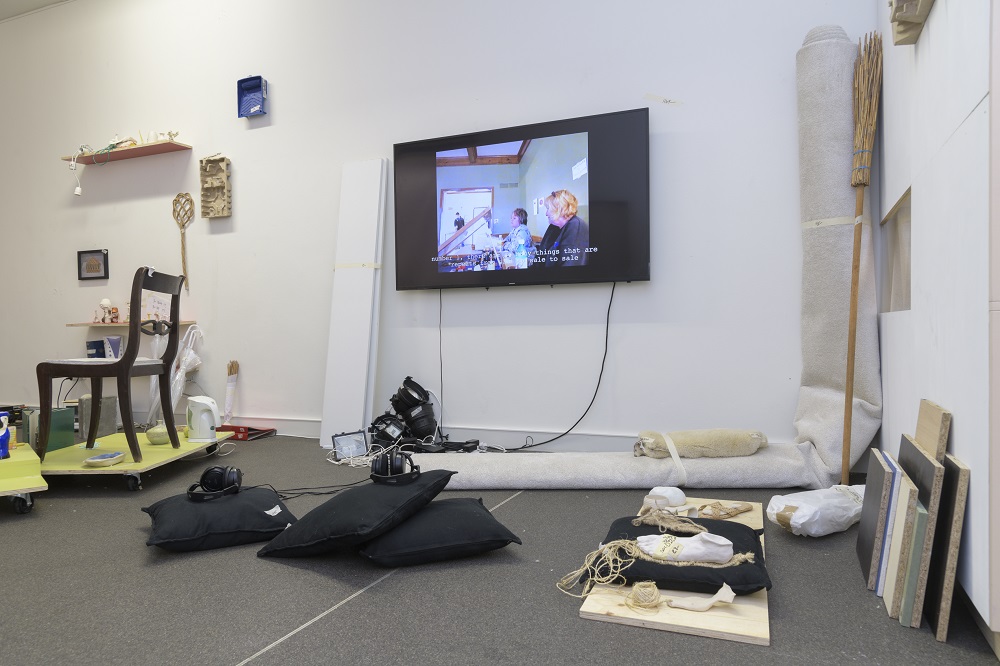
At the very start of the exhibition The Trouble with Value, Rachel Carey’s Liquidate It Away (2017-2018) is the first work you encounter. It consists of a collection of everyday objects – a carpet, umbrellas, lights – together with small clay sculptures of everyday objects arranged around a large screen, all with a price tag. With headphones on we watch camcorder-like footage of an estate agent explaining his own role in determining the value of personal belongings based on their use value instead of on their sentimental value.
Liquidate It Away explores the value of personal objects by focusing on the rising popularity of estate sales in the US. These estate sales happen when people in difficult financial situations, no longer able to pay their debts, need to liquidate their personal belongings for cash. I feel discomfort when watching the video mainly because of the way the agents appraise the personal belongings, especially when they talk about artworks, in terms of their use value.
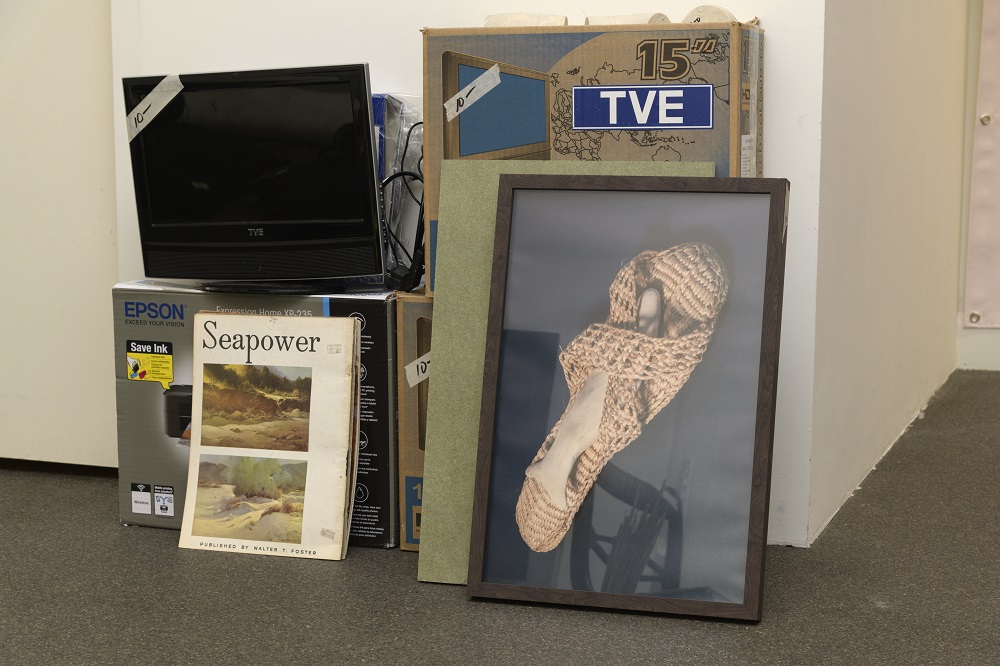
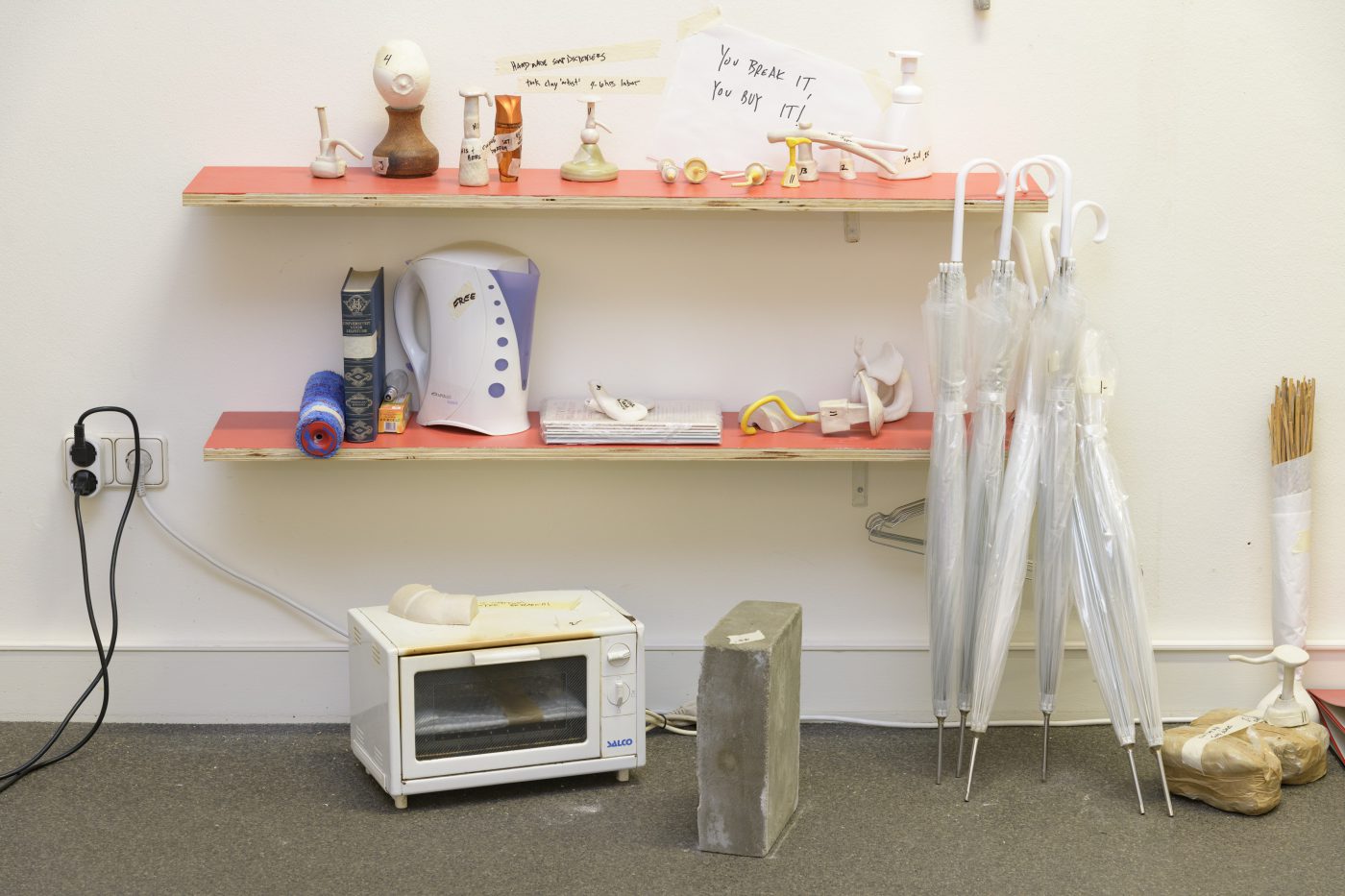
Carey’s own sculptures are scattered among the everyday objects with prices ranging from two to three euros, their value being determined by their possible use as paperweights. These artworks can be purchased along with any other item in the installation, even the large plasma screen. The discrepancy between what type of monetary value is applied to an object when it is regarded as art and when it is seen as just a useful object is powerfully highlighted.
One particular item stands out: a sock stuffed with hay, the worker’s foot. Its price is based on what the average worker would earn in the Netherlands. The work explores the use-value of objects but also comments on the socio-political context in which these items are sold. It particularly emphasizes that it is the context that determines the set of rules the sales agents apply to determine the value of an object.
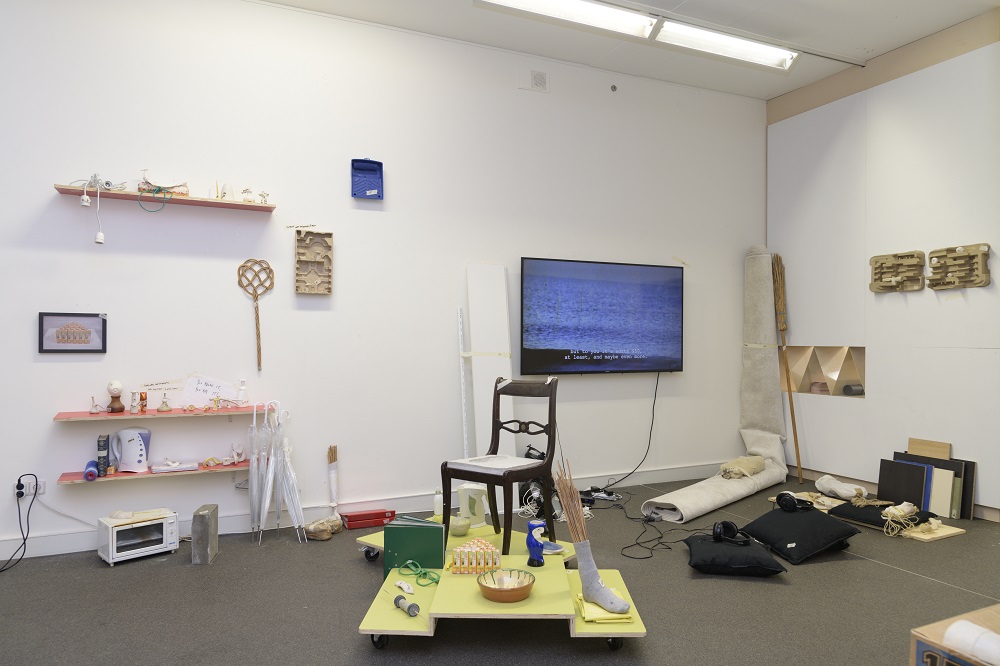
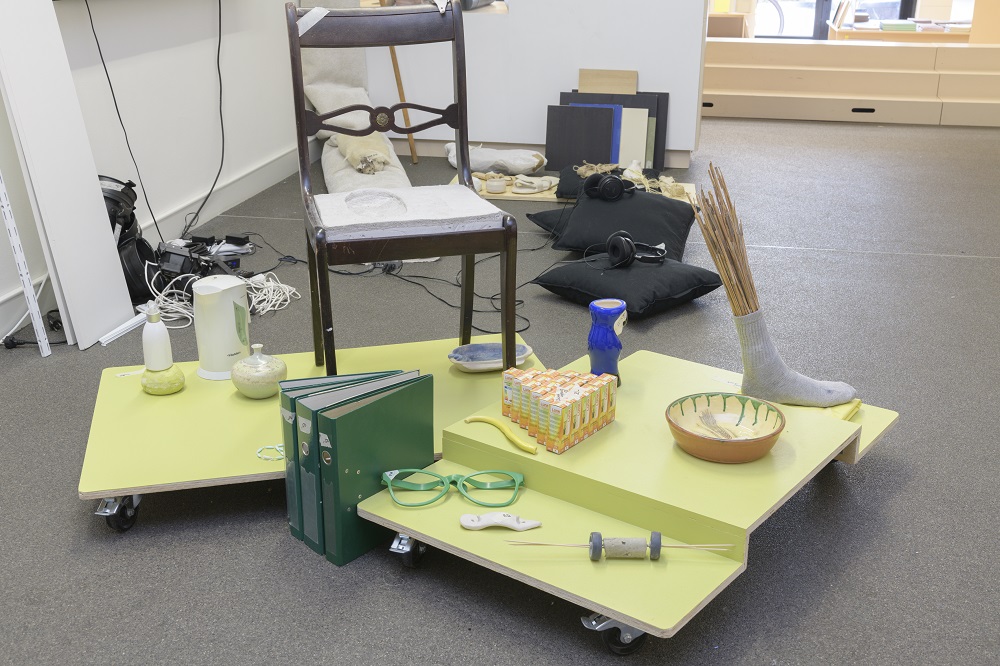
Carey’s Liquidate it Away problematizes the different aspects of value and even gives rise to unease. Carey devalues her own artworks by following the guidelines of the estate agent. Visitors are also actually able to buy her sculptures in the exhibition space at the same price as the estate agents would have valued it. The work problematizes value by highlighting the popularity of estate sales and the lengths people need to go into in order to survive financial debts. On top of that, the language Carey deploys is specific to the context of estate sales. In short, Carey’s work is one of the most intriguing in the context of the exhibition as it touches upon all five categories as identified by the curators.
Towering next to it is Map of Invisible Matter (2017- ongoing): a large pink billboard-sized work covered with maps and graphs. This work is the second outcome of the ongoing data research into the global contemporary art field of artist’s duo Fokus Grupa. They have been researching the e-flux announcements of the past two decades. Juxtaposed with Liquidate it All Away, Map of Invisible Matter reveals a lot about the particular context that determines the value of artworks.
The first two works in the exhibition introduce the viewer to the context of valuation in a wider sense. The rest of the works, exhibited in two separate rooms, problematize specific valuation processes.
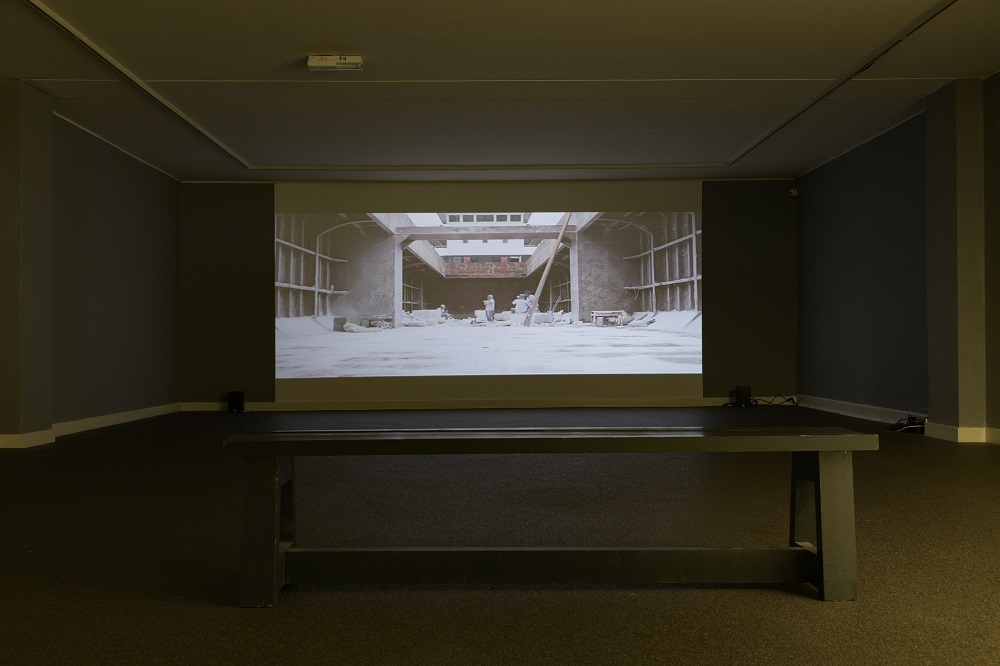
Andrian Paci’s video The Column (2013), already reviewed on this website, follows an enormous piece of marble from a Chinese mine up to its transformation into a Corinthian column which happens during its sea voyage. Here you see the sweat and the fruits of the Asian worker’s labour exposed in reference to a long history of symbolic production in the West.
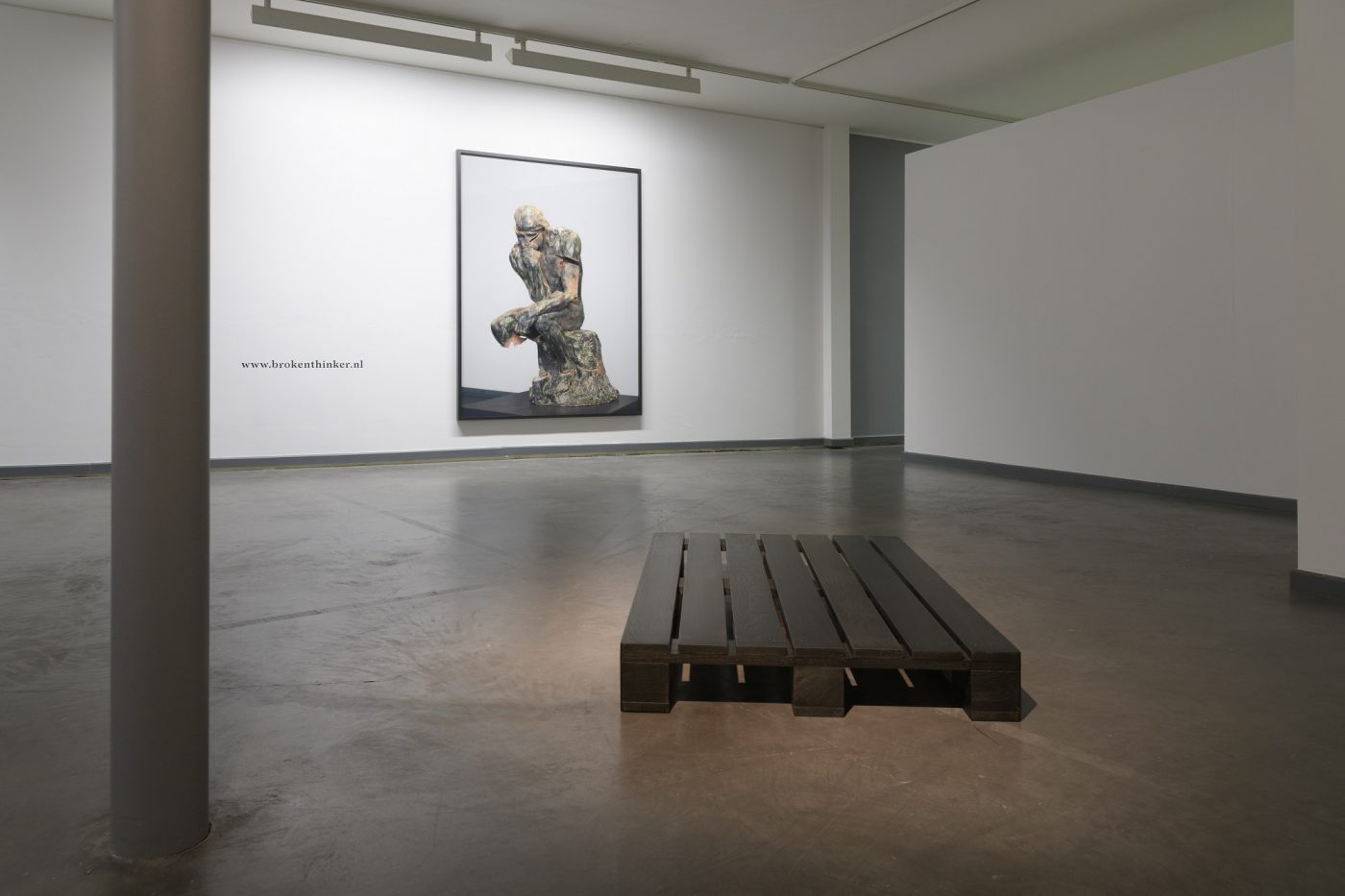
In the last space of the exhibition a dark pallet is situated at the centre. Karolina Grzywnowicz’s Still Life (2017) is a sculpture made from the wood of a 1350 years old oak tree from the Bialowiezia Forest, one of the last remaining primeval forest in Europa. The dark colour is created by soaking the oak in water for hundreds of years. It is often referred to as ‘the Polish ebony’. When Poland started logging the wood from this forest in 2017, it caused global uproar, resulting in the European Union ordering them to stop logging the wood, imposing hefty fines on those who do.
As these examples show, the exhibition creates a very diverse overview of the different aspects out of which value is built up. However, it does not offer a singular view on the process of valuation. Instead it vocalises different obstacles and problematizes the different aspects of value determination.
Also including works by Benera and Estefan, gerlach en koop, Monique Hendriksen, Arnoud Holleman and Gert Jan Kocken, Kornel Janczy, Feliks Szyszko and Timm Ulrichs, the exhibition stretches beyond the scope of this review. The diversity of examples given here might be intentional. We should all be aware of processes of valuation. Do not judge lightly. Critics should be careful too.
All images by Peter Cox
The Trouble with Value, Onomatopee, Eindhoven, until 22.07.2018
with works by Benera and Estefan, Rachel Carey, gerlach en koop, Fokus Grupa, Karolina Grzywnowicz, Monique Hendriksen, Arnoud Holleman and Gert Jan Kocken, Kornel Janczy, Adrian Paci, Feliks Szyszko, Timm Ulrichs.
Nicole Sciarone
is intern at Metropolis M


